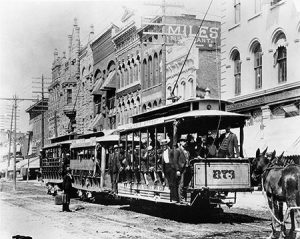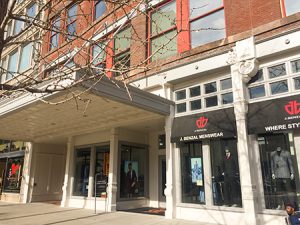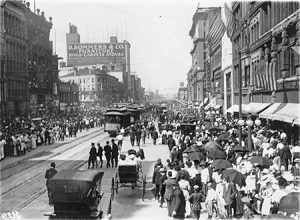URBAN DESIGN: The best downtowns encourage community
Buildings that shut out street life are all about isolation, a concept we’re experiencing to an uncomfortable degree.
Buildings that shut out street life are all about isolation, a concept we’re experiencing to an uncomfortable degree.
We shouldn’t accept the existence of barren, tree-less blocks downtown or elsewhere in our city.
Indy needs to pay more attention to the role aesthetics play in drawing people and investment.
Cities trying to slow down traffic are seeing numerous counter-intuitive benefits.
The neighborhood that includes City Market, the Julia M. Carson Transit Center and numerous other assets is loaded with potential and entrenched obstacles.
Numerous examples show how places like Castleton can be recast on a human scale.
A century ago we were learning lessons from another disruptive technology that had people in an uproar: the automobile.
The distinctive geometric grid of streets and avenues that define Washington, D.C., heavily influenced the original plat of Indianapolis. As we consider our city’s future, it may once again be time to look to the nation’s capital for inspiration.
Urban living means more than just locating in the downtown core of the biggest cities. What people are looking for is not a compromised blend of suburban and urban, but an urban condition scaled to their lifestyle.
As the Indiana Pacers contemplate an outdoor space adjacent to Bankers Life Fieldhouse, it’s a good time to consider the design elements that make a successful plaza work.
New multi-family projects often fail to provide the privacy statement delivered by the porch, stoop or plinth.
Young parents give urban neighborhoods seal of approval for safety, walkability.

Previous expansions of public transportation were also followed by population growth.
Northern city’s headline-grabbing policy isn’t much different than what we’ve already accomplished.

Far from dead, bricks-and-mortar stores have the power to boost city in quest for workforce talent.
Making pedestrians, cyclists a priority has driven economic development in cities around the world.
Do we want to be known as a lively urban place … or a place for parking?

Easy access to groceries no panacea for bad nutrition, but built environment has role to play.

Places thrive when they’re designed to bring us together, not keep us apart.
Over-regulation is a threat to the complexity—and beauty—of urban living.